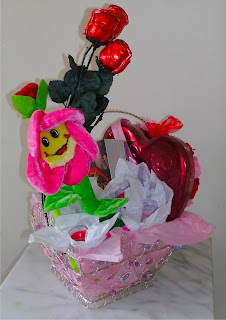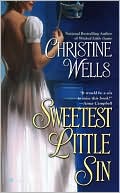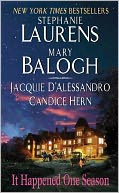I don't write Romance, but I want to add a romantic scene. How do I do this?
A 'romance' scene falls into the category of intense, interpersonal scene.
There are many kinds of scenes. You got yer 'individual concentrates on something' scenes like 'Frodo climbs the cliff in Mordor'.
You got yer brisk, big-movement action scenes like 'George kicks the villain in the teeth' or 'Marvin drives a car really fast'.
You got your scenes of internals like 'Harold remembers his boyhood' or 'Martha plots a murder'.
 A romantic scene is a two-person interaction scene. Similar interaction scenes are 'an argument', 'a confrontation', 'a persuasion', or a close, emotional dialog of any kind.
A romantic scene is a two-person interaction scene. Similar interaction scenes are 'an argument', 'a confrontation', 'a persuasion', or a close, emotional dialog of any kind.Even if your folks don't have a lot to say to each other, that's the kind of scene it is.
What are the characteristics of a close interpersonal scene?
1) Very tight focus on the other person. The corollary, that's the next point below, is a lack of focus on the surroundings.
Most visuals are going to be of the other person -- the non-POV character -- and they are going to be small details. This is where you talk about the shape of an ear lobe or the crooked eye tooth on the lower jaw. Not -- he's tall. Not -- he's wearing vintage cowboy boots.
When someone is in the most intimate zone of contact with the POV character, description includes smell, taste, touch, hearing small sounds. This is when he notices the smell in her armpits, the taste of her hair, the sound of her stomach rumbling, the fleshy mumble of his ear lobe.
You convince the reader that these two people are propinquitous by using details that are only apparent upon close contact.

We note the small changes in the eyes or mouth that signal feelings. The POV character is intensely aware of the other person's expression.
2) We tend to leave out most description of the surroundings.
So . . . not so much talking about the semiraker and dohinki on the engineering panel. Not so much commenting on the clouds floating over the fleecy red fields of the planet Florami. Not so much dwelling on the color of the damask curtains.
This is why it's nice to put the romantic encounter in scenery that has been used before and described before. The reader already knows what the galley looks like before you move your protagonists in there and set them to making love on the counter.
This 'I have no time to talk about the color of the couch' is true in 'fight scenes' and 'intense dialog' and 'escape scenes'. If you've nailed the description down earlier -- even just walking through the place -- you don't have to sketch it in now.
3) You do add description that enhances the purpose of the scene.
This is true in any scene, of course. In an intensely emotional scene, you have one or two emotional themes you're playing with. You highlight scenery description and stage business to follow the emotional theme.
If the scene is sensual, you might describe the furs and velvets on the bed. (And yes. There is no reason space travellers wouldn't have furs and velvets on the bed.) The smell of flowers in a vase. The gems on the perfume bottle on the dresser. The ozone and mineral smell of the warm bath that's been run in the room next door.
If an issue in the relationship is the strength, lethality and touchiness of the female, your stage business might be she's chopping carrots for dinner. The glint of the knife becomes part of the dialog, symbolic of her own dangerous edge.
4) Dialog, dialog, dialog.
 A romance scene is about communication between the protagonists.
A romance scene is about communication between the protagonists.Build the dialog by giving them something to talk about.
Now it might be simply 'my room or yours', but if this is an important relationship, there's probably more to it than that.
What you do here is ask yourself -- 'In this scene, what changes in the relationship?'
That's what the dialog is about.
Techniques for building this 'what changes' dialog:
-- Have a character say something true. Truth is tremendously powerful in dialog. "I hated it when you went to bed with Jerome." "I'm planning to do this once, and then walk off and leave you." "You're not really pretty."
-- Make the character sound like himself. You always do, but if there are tricks that give your character his voice, this is the time to put them in place.
-- Take some of the words the character is thinking and put them into speech. When the words are said out loud, the other character can respond to them.
If a character says, 'the sheets are cold', you have dialog about this. If he thinks about the cold sheets . . . the perception stays small and lonely.
-- Let them talk about the problem that has kept them apart for the eighteen chapters before this.
-- Let them talk, (or think,) about what happens next. (No. Not just the horizontal rumba. What happens next week?)
5) Dialog is couched in relationship terms.
Dialog is always responsive, of course. That is, when something gets said the returning words are an answer.
 In a relationship scene, the words do not merely respond to what is said. Each bit of dialog is also responding to where the relationship is right at that moment.
In a relationship scene, the words do not merely respond to what is said. Each bit of dialog is also responding to where the relationship is right at that moment.She: Where did I leave my car keys?
He: On the table.
versus
She: Where did I leave my car keys?
He: Here. No. Don't get up. I'll pass them to you.
That moment, the relationship is at a place he wants to give something to her.
He: A little onion. A few olives. That's done. Pass me the crisper.
She: Here. I'll take it out to the table.
versus
He: A little onion. A few olives. That's done. Pass me the crisper.
She: Here. That looks remarkably tasty. I'll take it out to the table.
Because she's thinking how tasty he looks.
I do not mean you fill the conversation with innuendo. You just take into account that people talk to each other differently when they are in a romantic situation.
6) Because a romantic relationship scene is about sexuality and sensuality, describe the internal physical response of the POV character.
Try not to be purple about this.
And the POV character sees signs of sexual response in the other person.
7) Direct address.
Mostly characters do not address one another by name. The usual advice is to pull these direct address names out -- and very good advice that is.
In a relationship scene, though, I think he can call her Sue-Ellen or Gigi once or twice.
8) Pacing is generally slow in relationship scenes. There's lots of talk. You get a pause now and then. Lots of internals.
You can slow pacing with a few complex and longish sentences interspersed into the page, or by adding stage business that the reader will see as taking a long time.
'He crossed the room and then paced back again.' is nine words.
 'He hunted the shelf till he found the dictionary.' is also nine words -- but that action is going to slow the reader's perception of the pace of the scene.
'He hunted the shelf till he found the dictionary.' is also nine words -- but that action is going to slow the reader's perception of the pace of the scene.When you get to scenes of actual sexual activity, the pace should pick up for at least part of the scene.
This sort of scene benefits from noticeable changes in pacing.
9) It is a Romance genre convention that POV can be switched once, or more than once, in sex scenes. This gives the reader two POV glances at the same material.
Not by any means necessary, but something to think about.



































